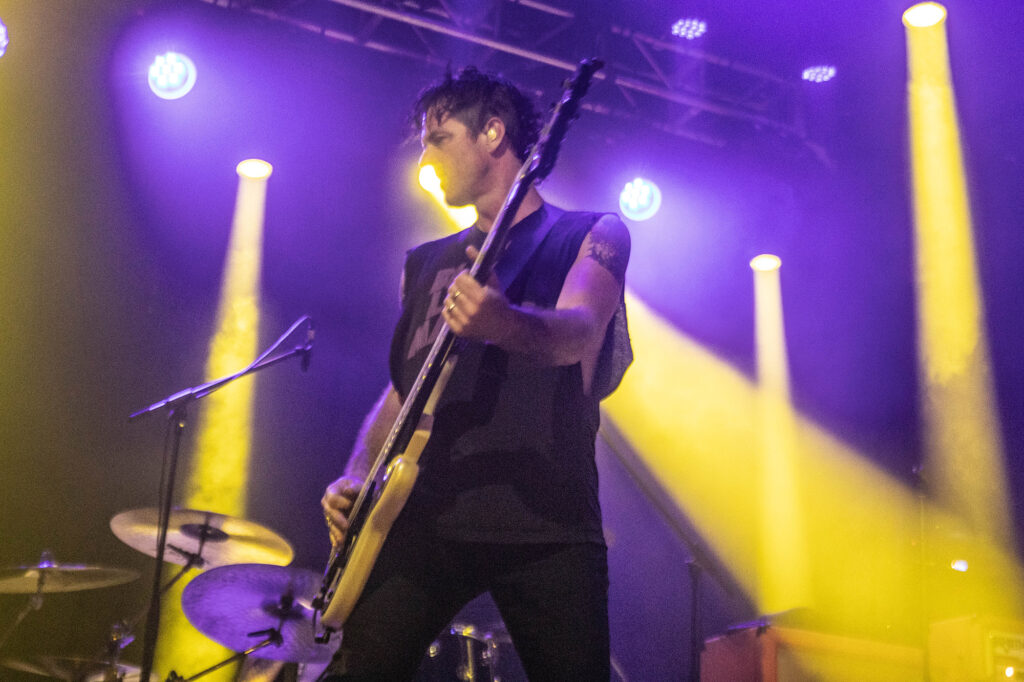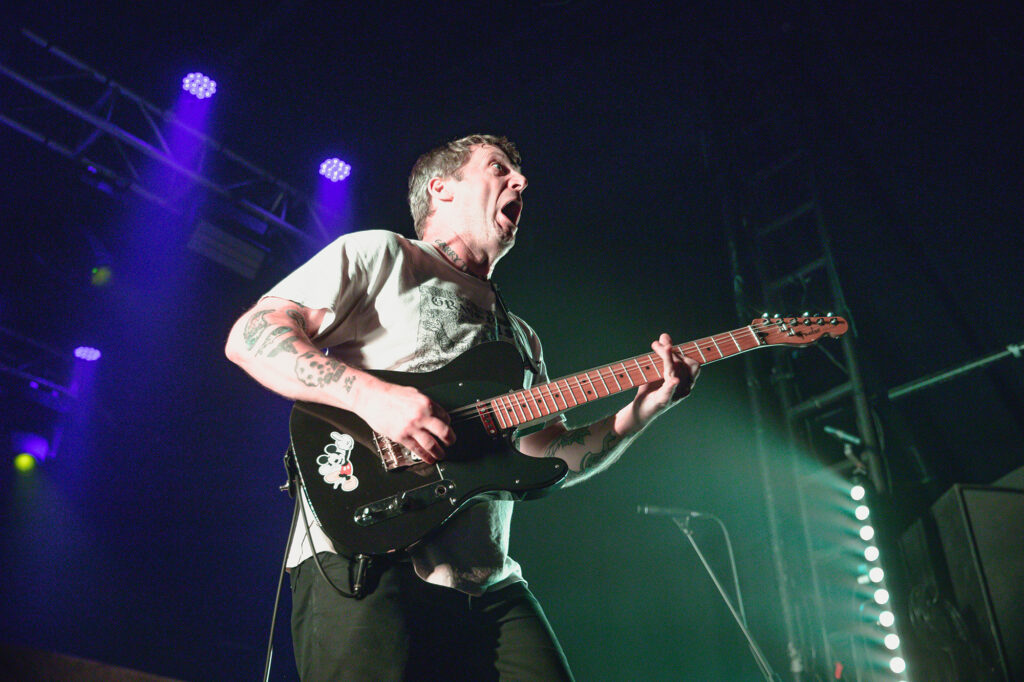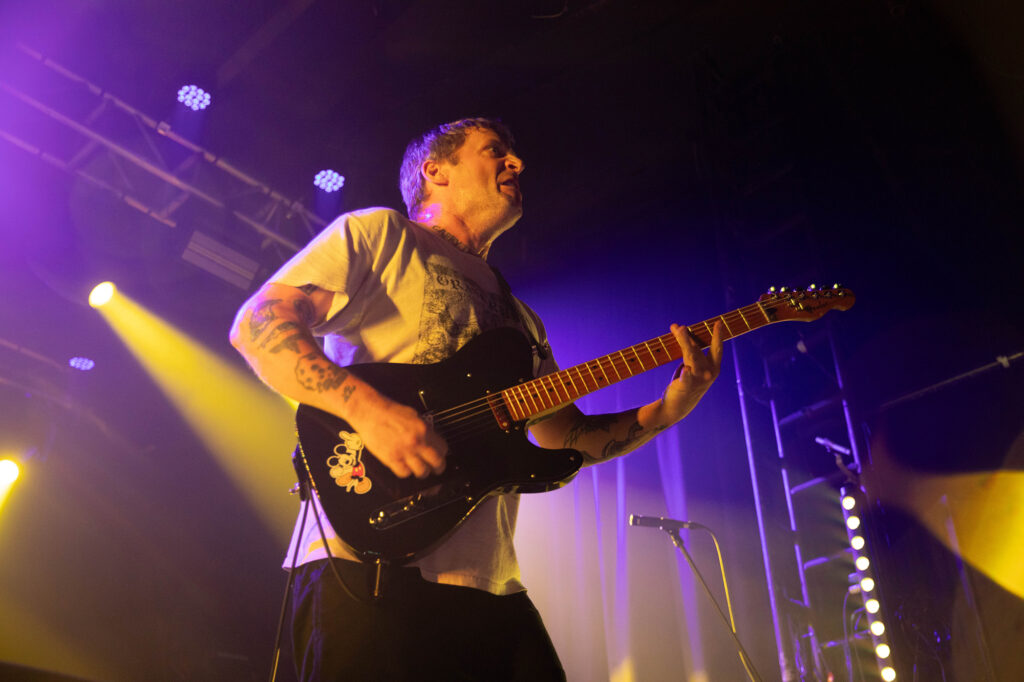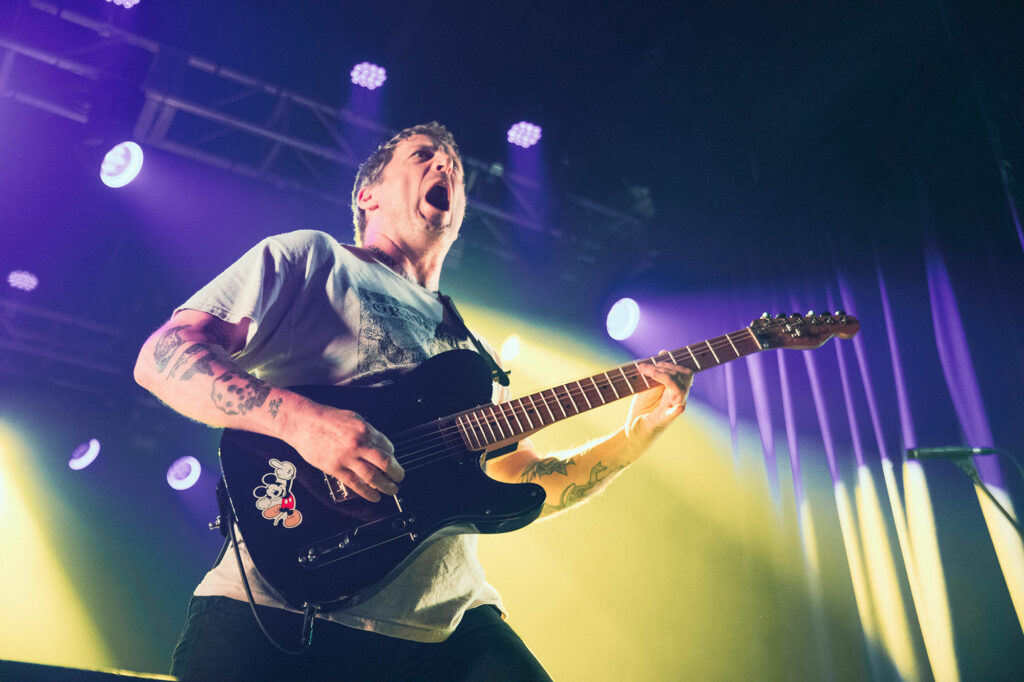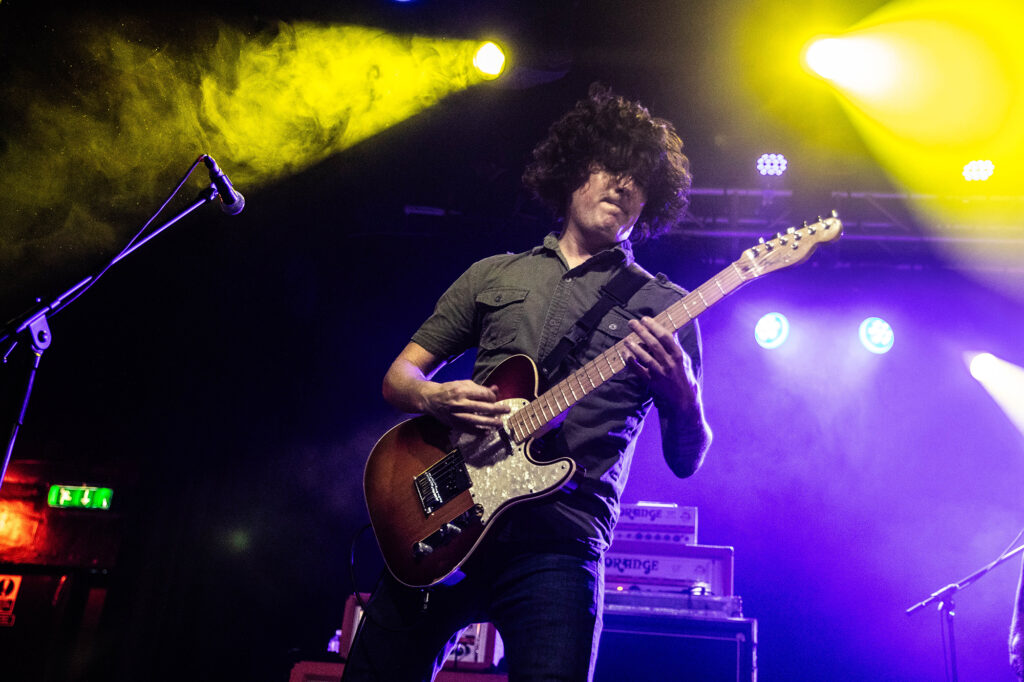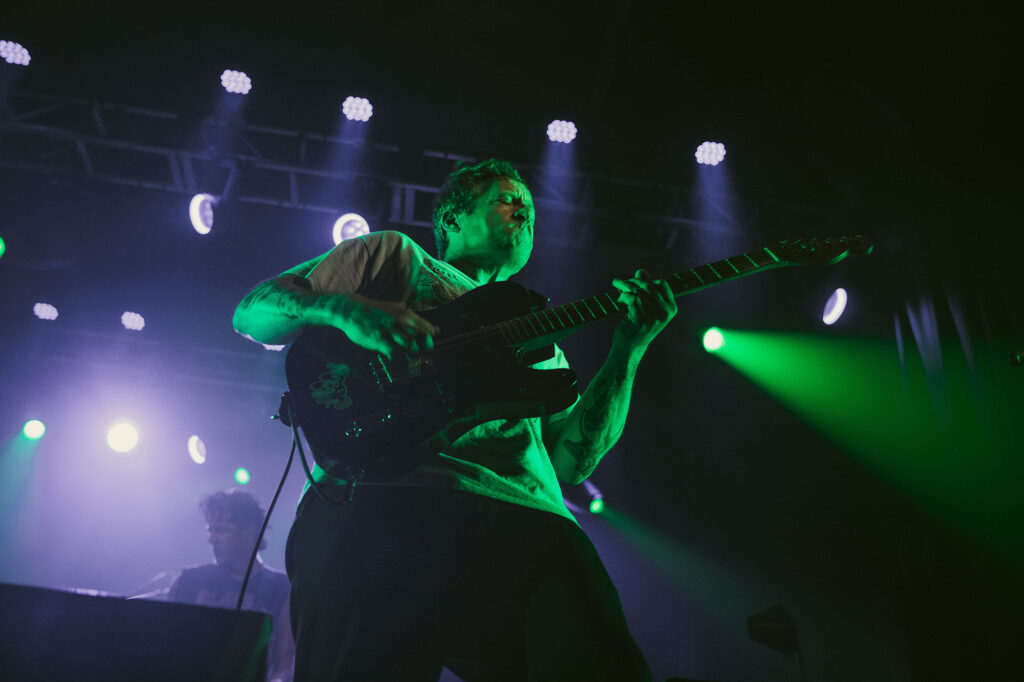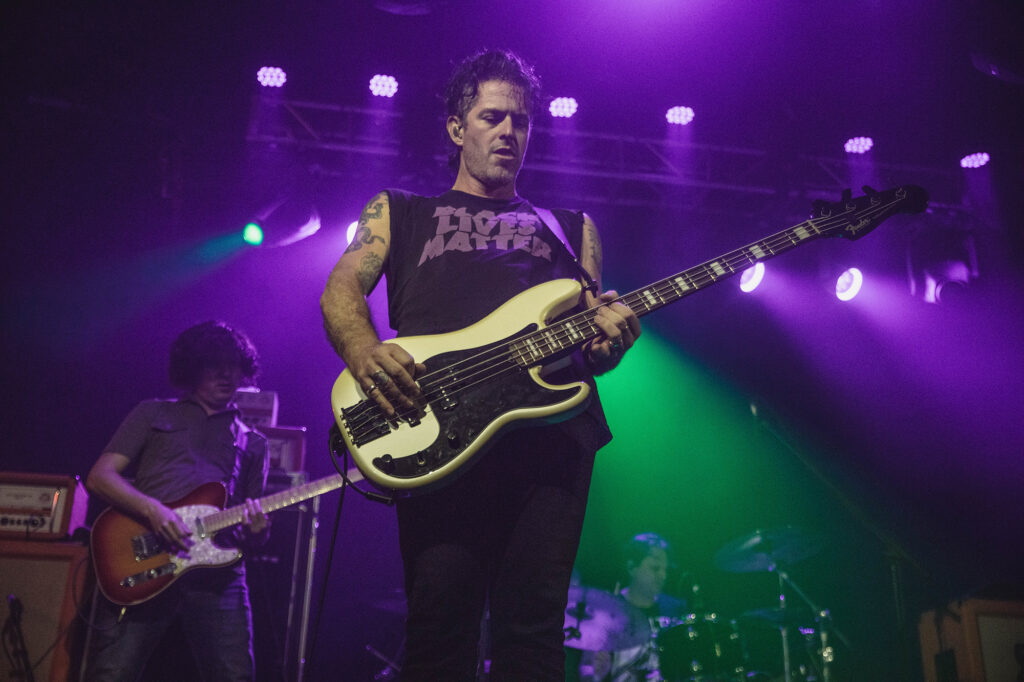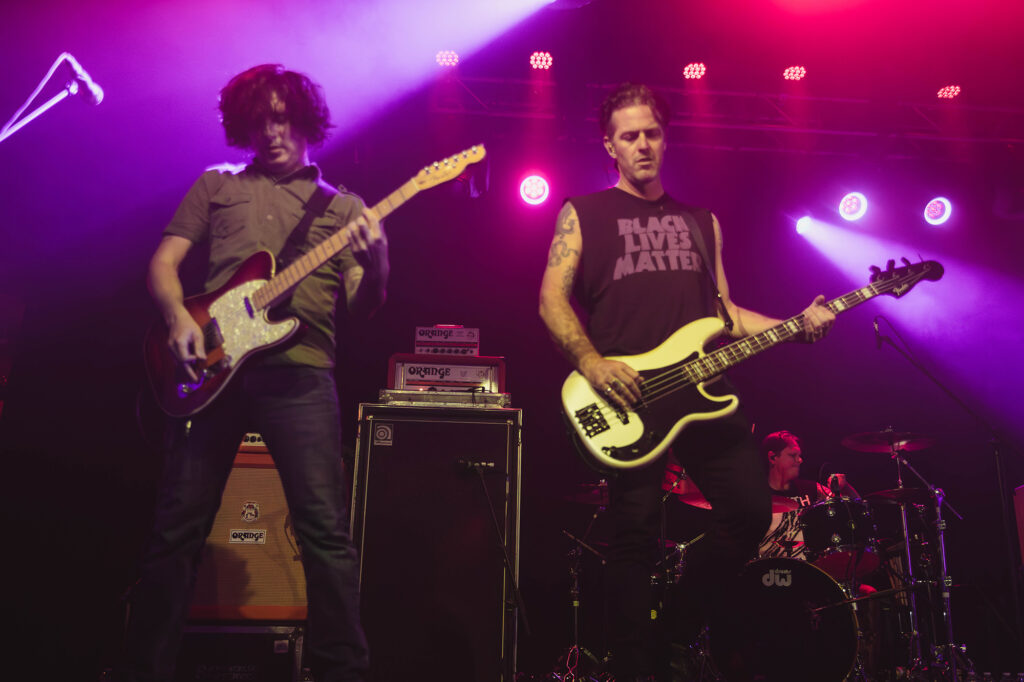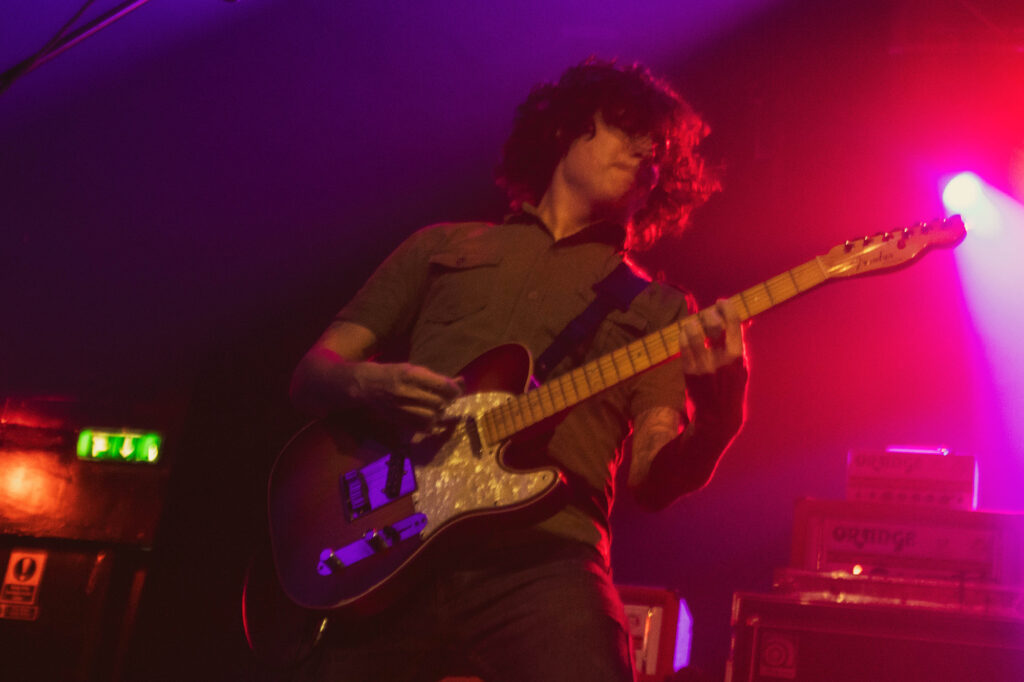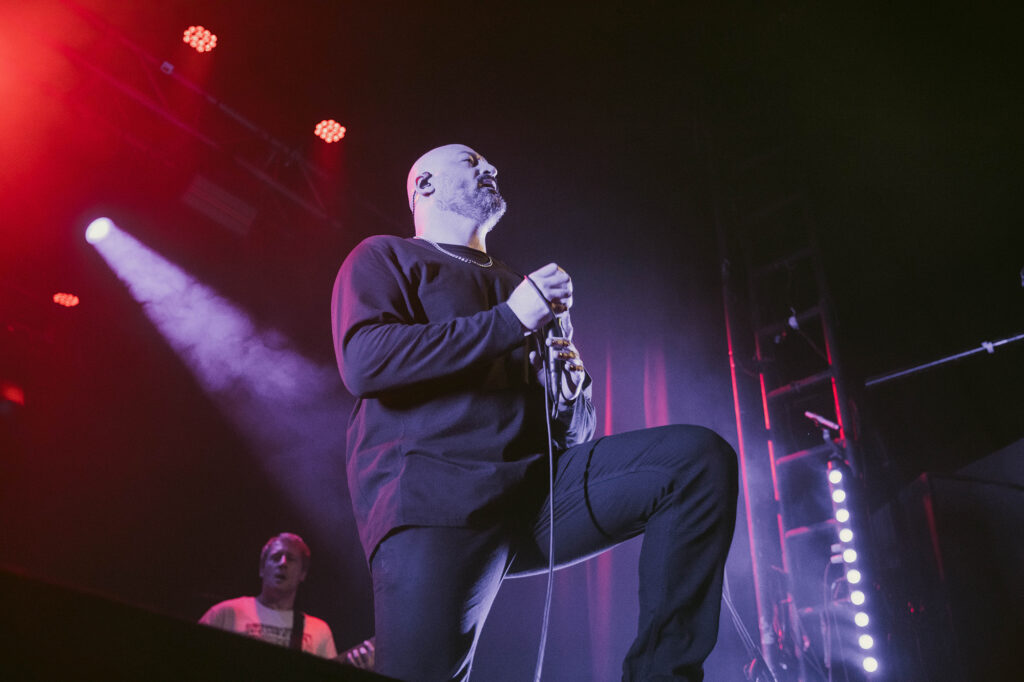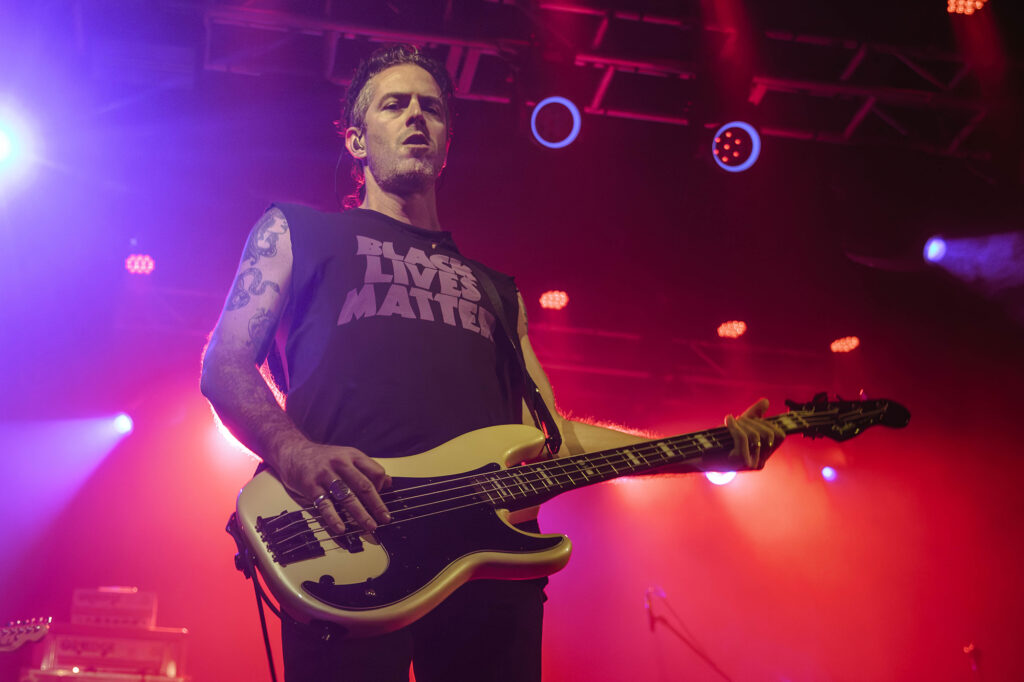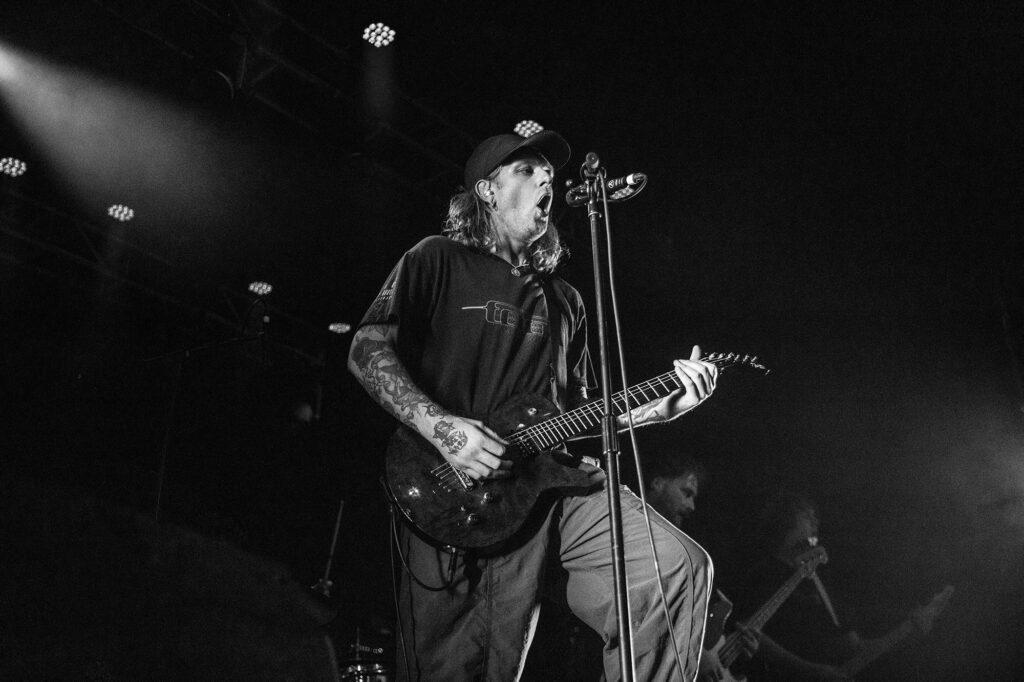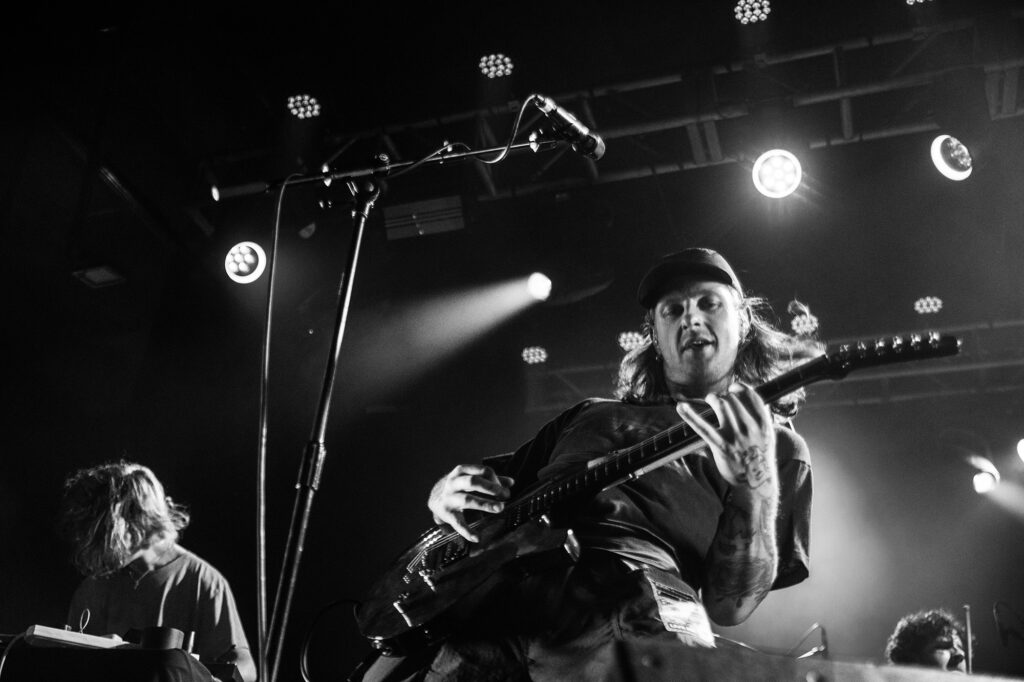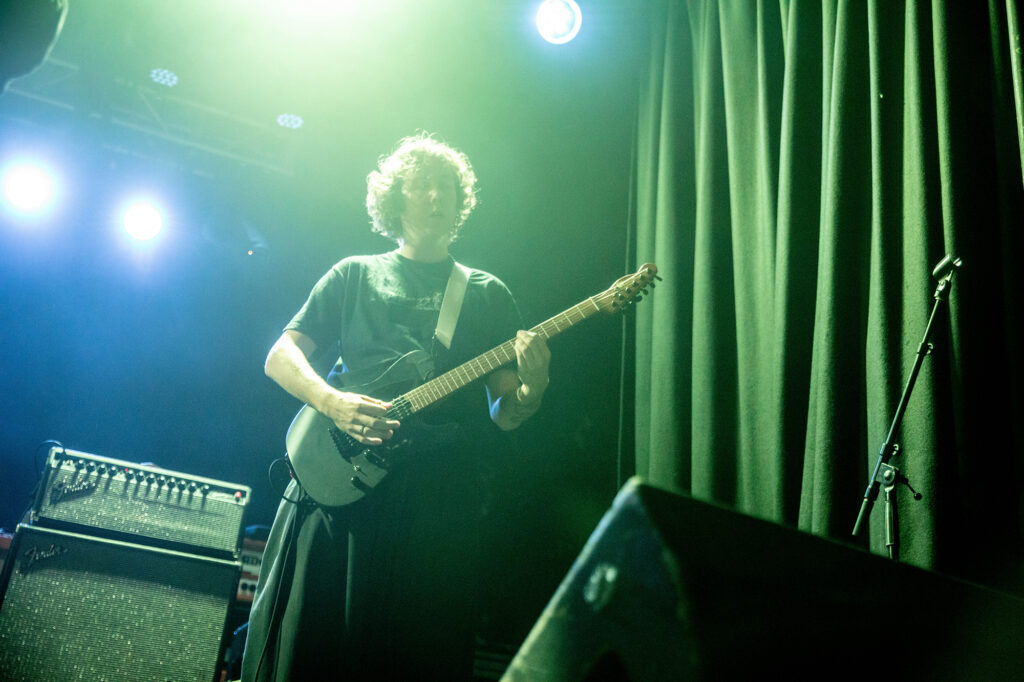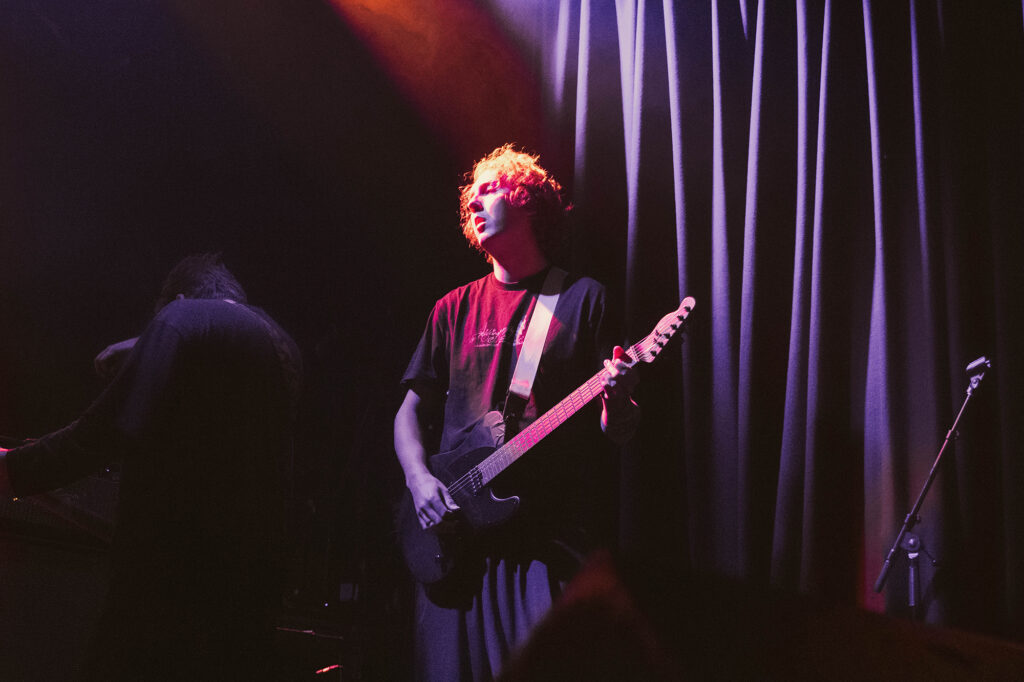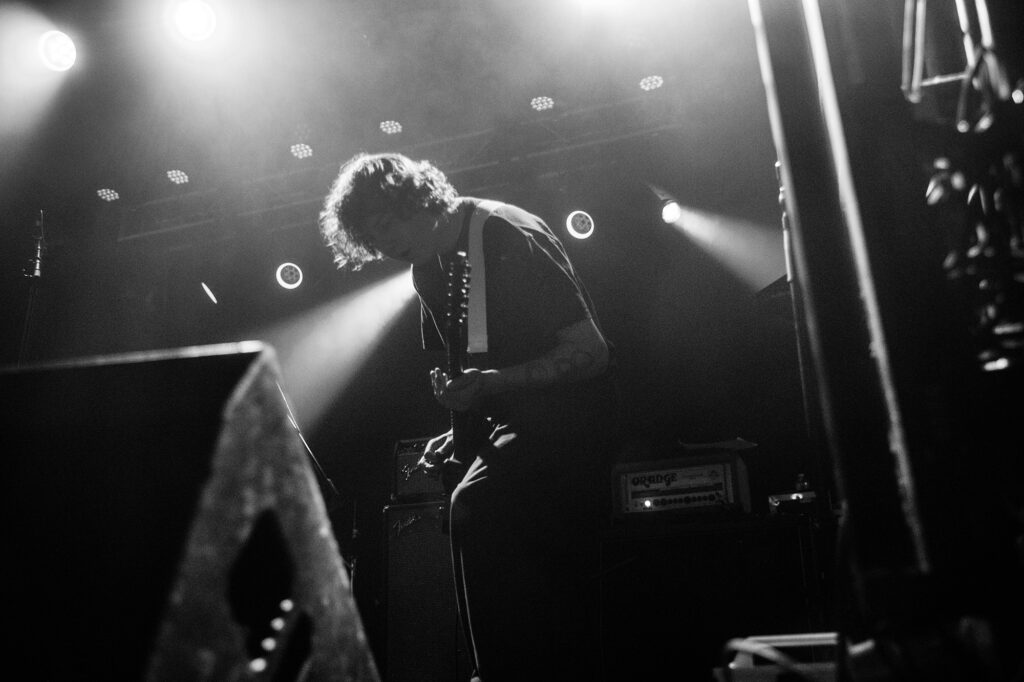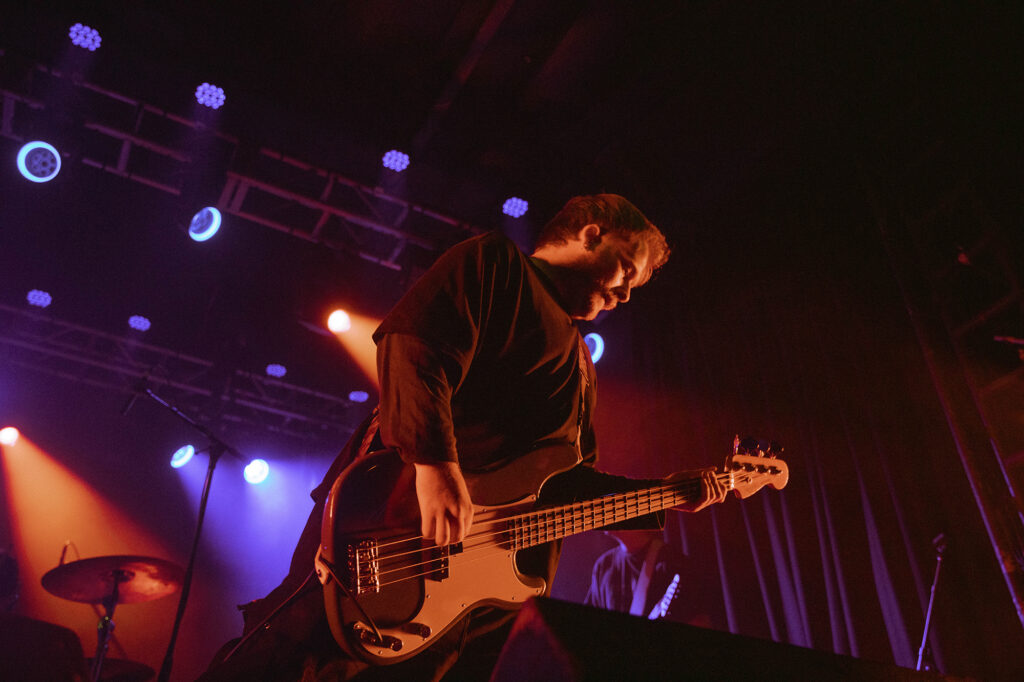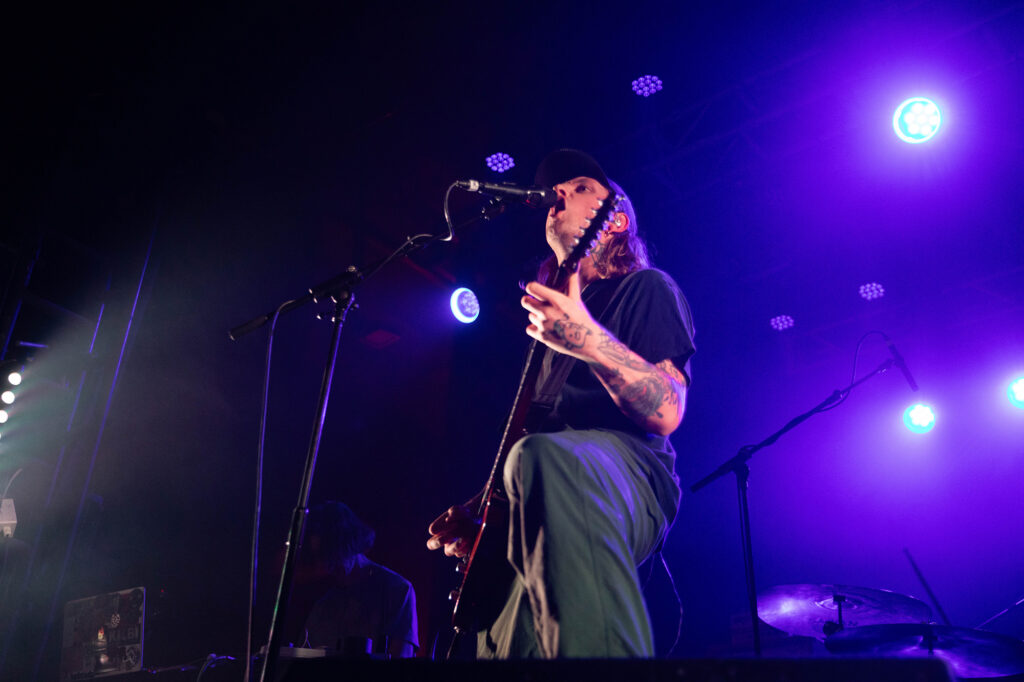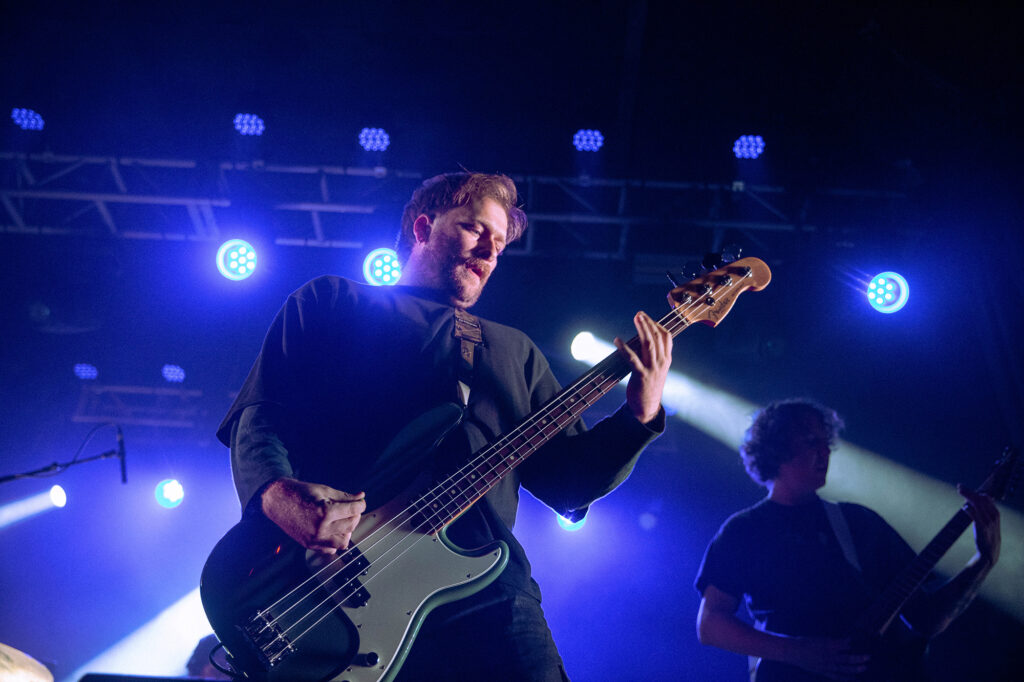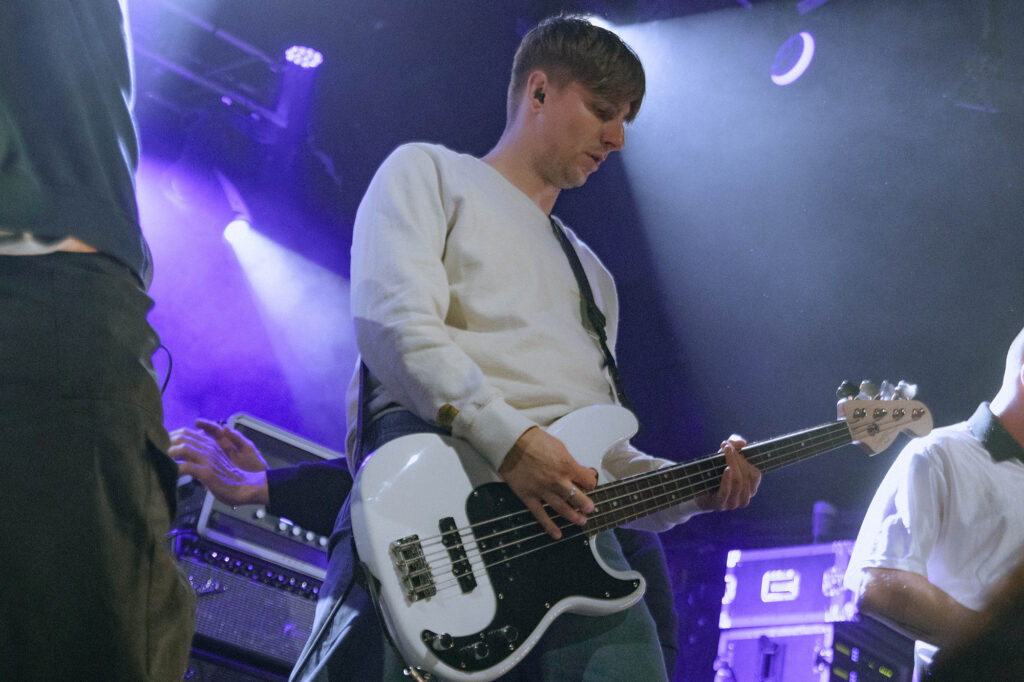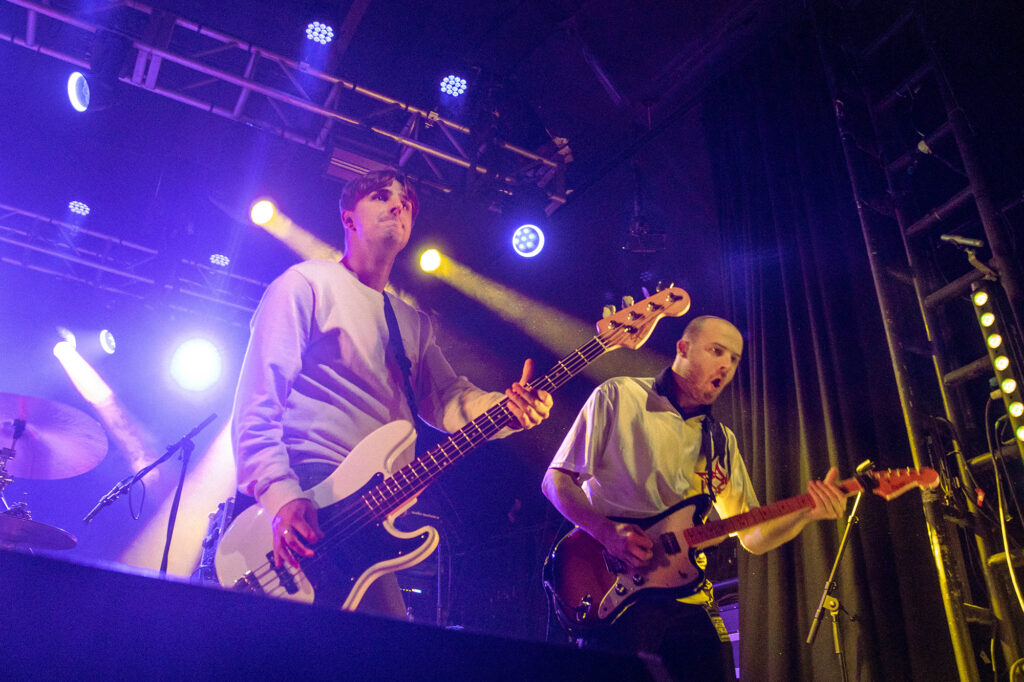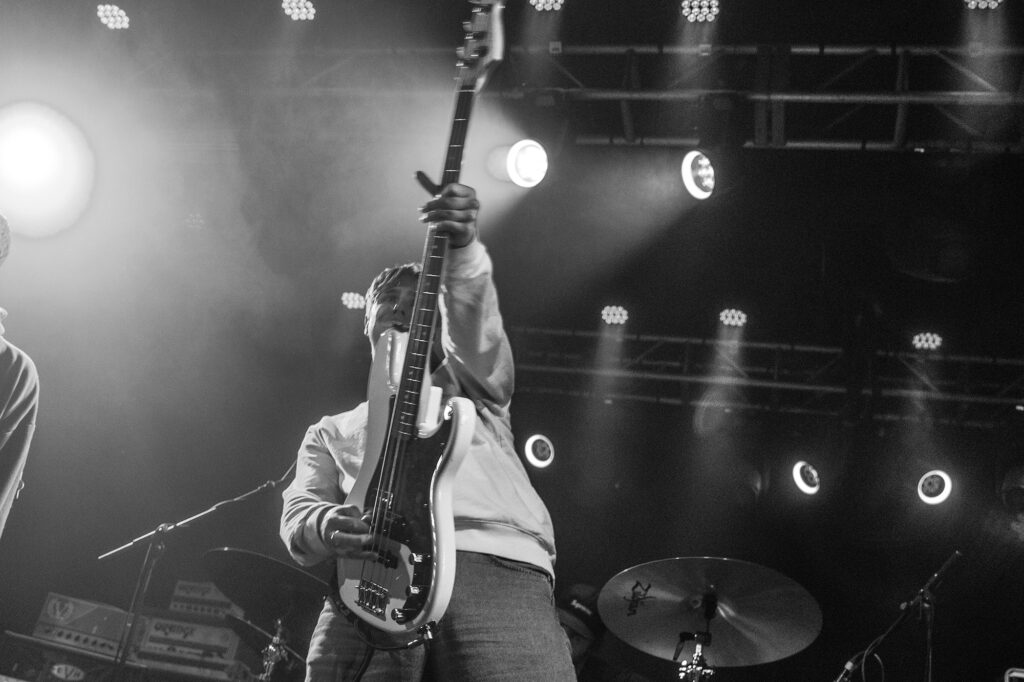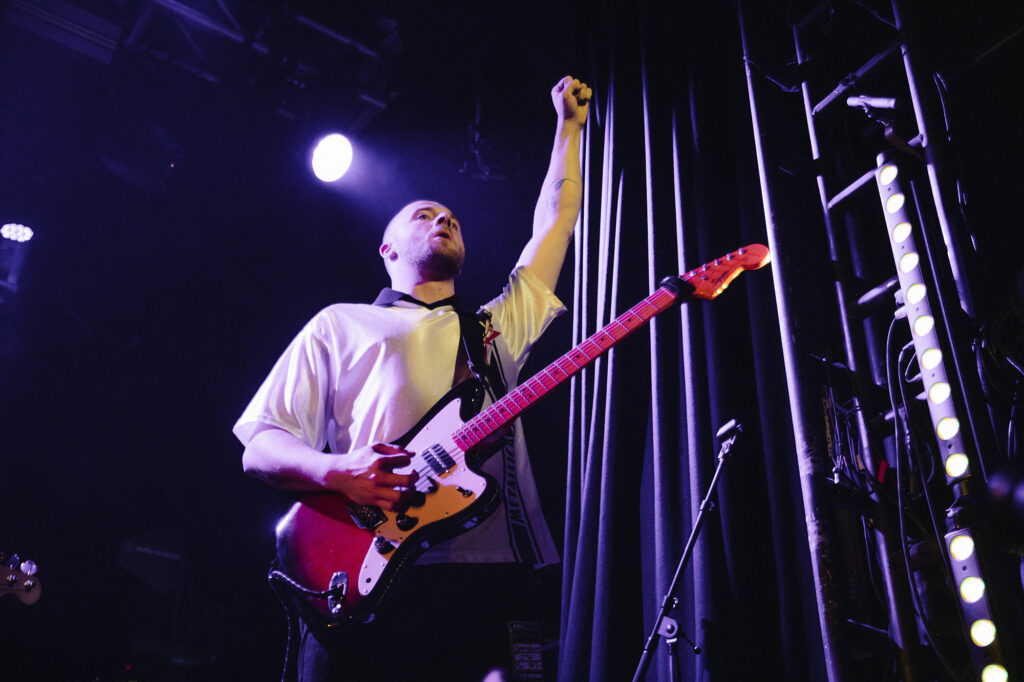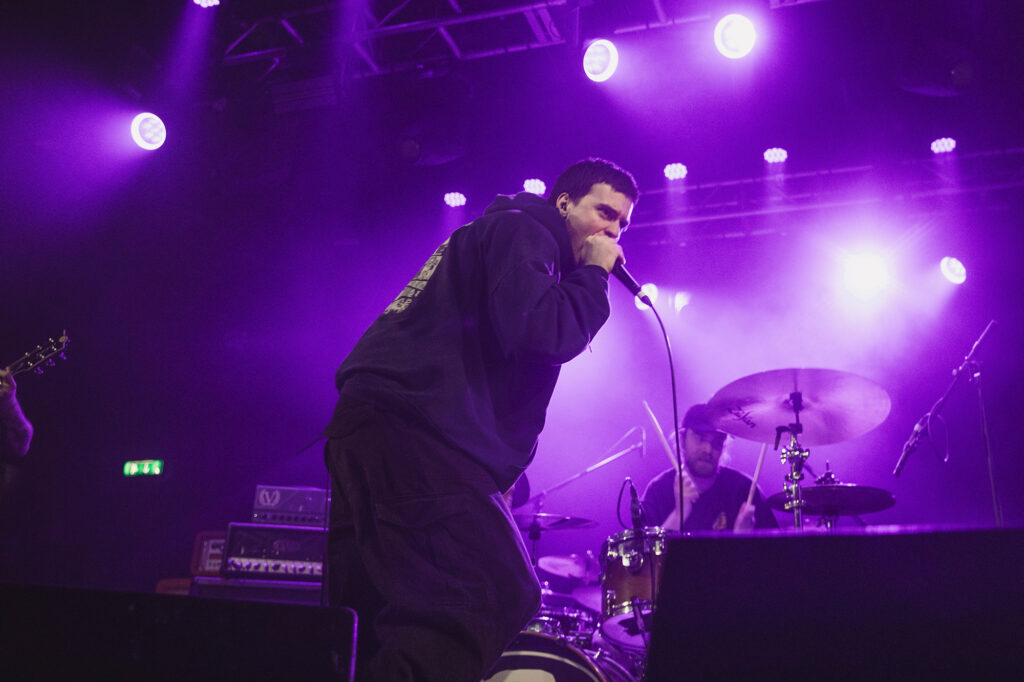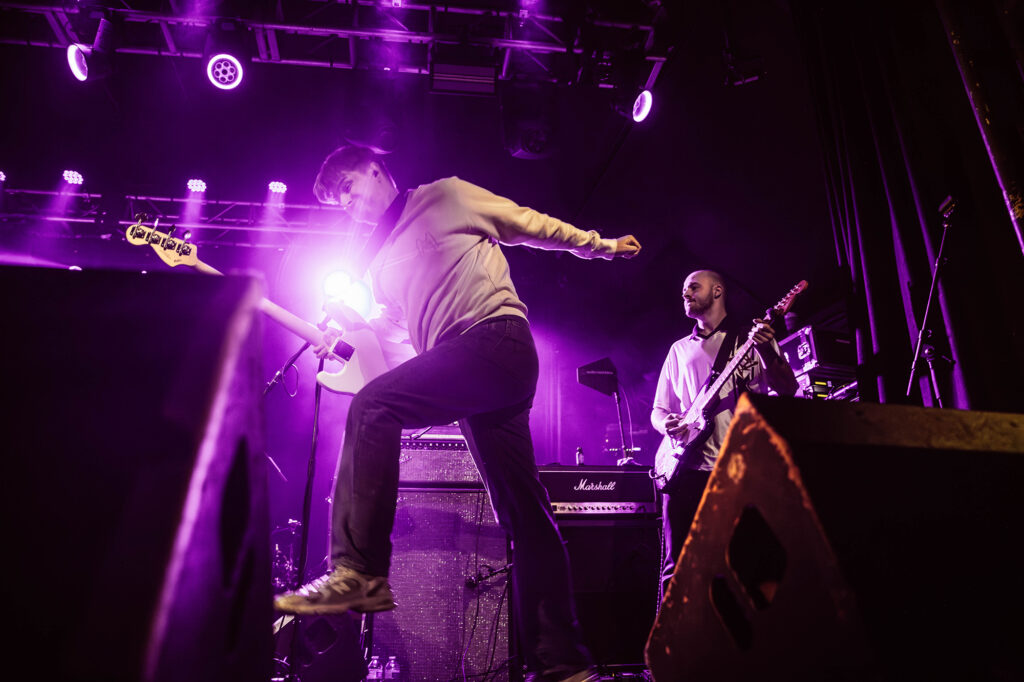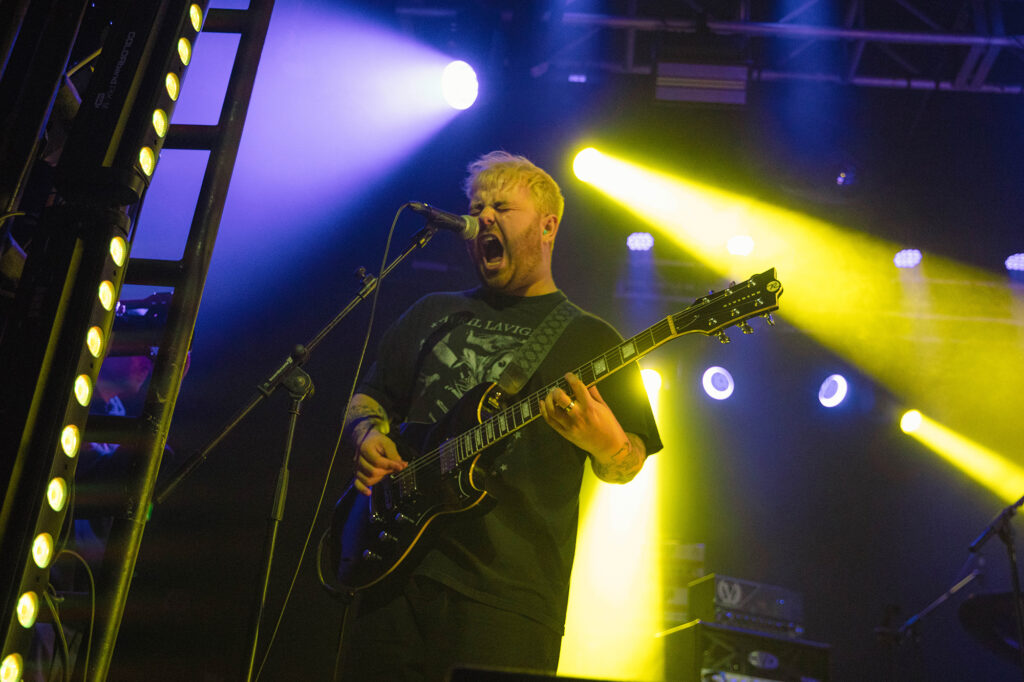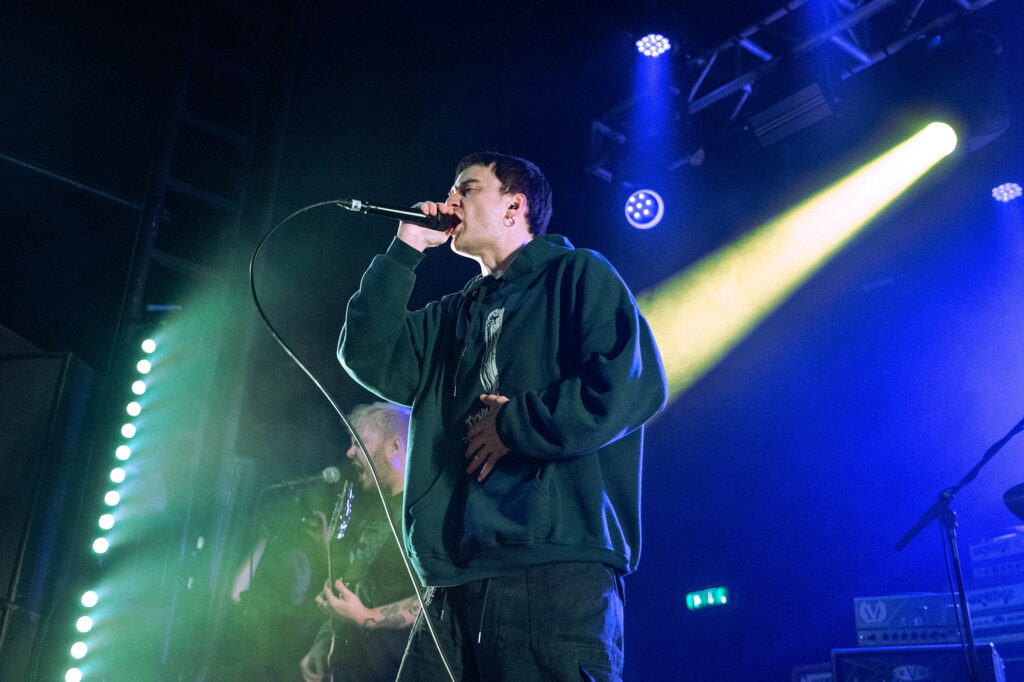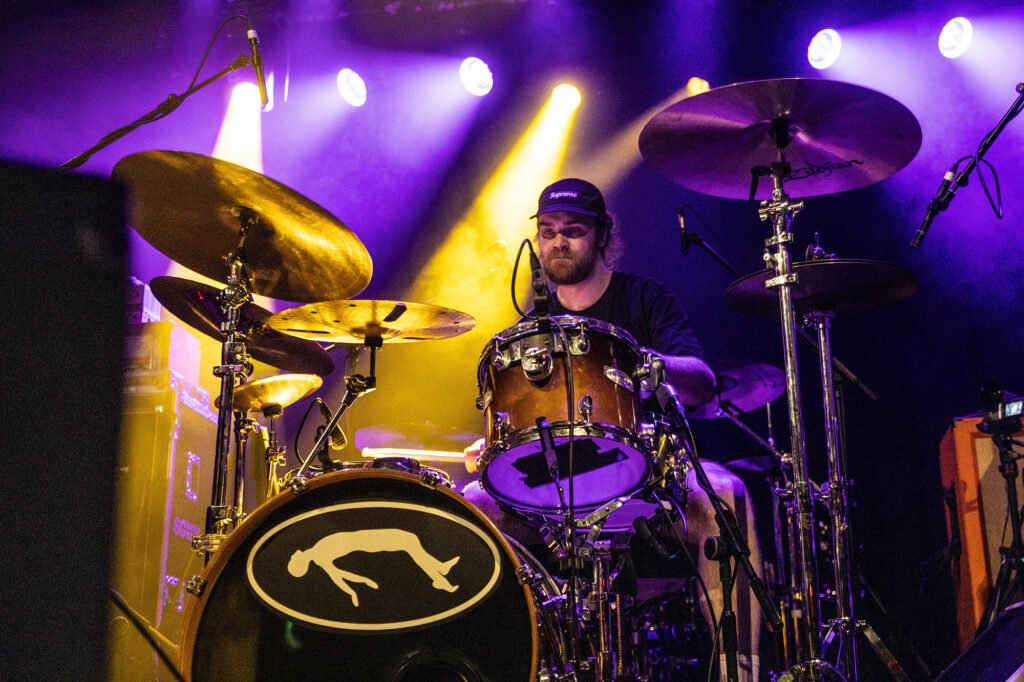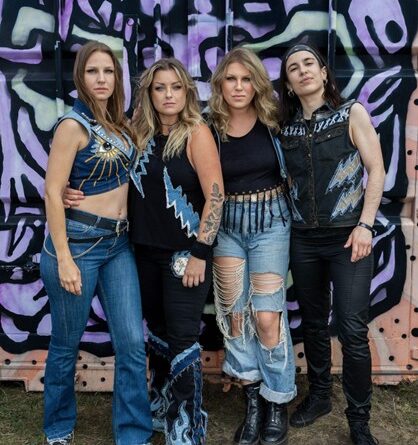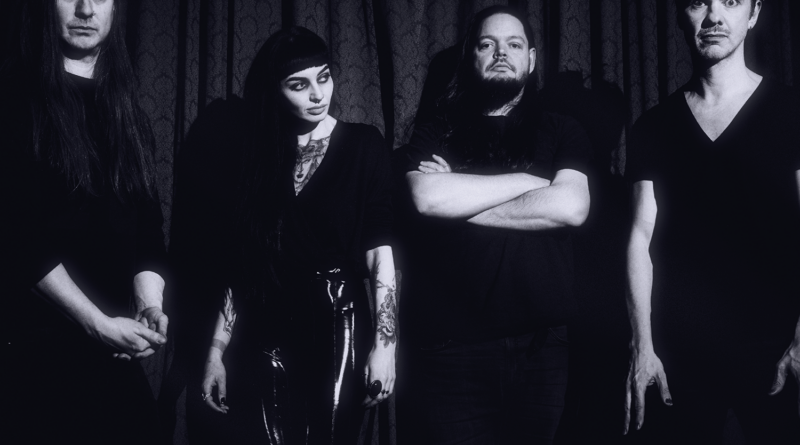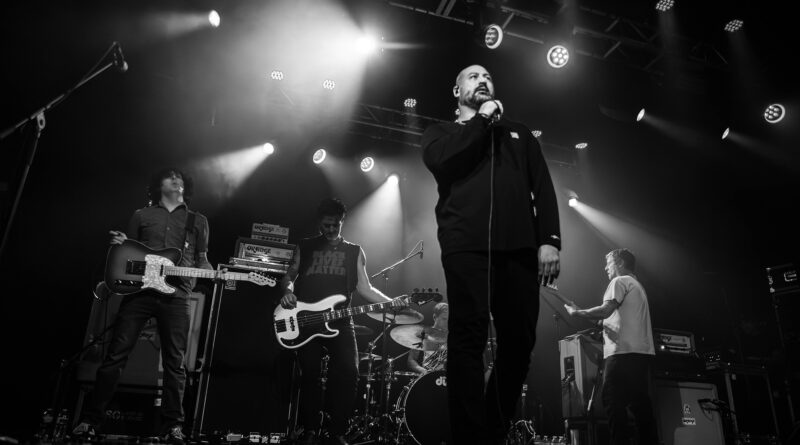
HARDCORELIVE REVIEWSMETALCOREPHOTO GALLERIESREVIEWS
Camden’s The Electric Ballroom braced itself for a night of unrelenting hardcore, as the legendary innovators Poison The Well returned to London. Celebrating the 25th anniversary of their seminal album, The Opposite of December… A Season of Separation, the evening promised a journey through the scene’s past, present, and future, with support from two rising acts: KILLING ME SOFTLY and BODYWEB.
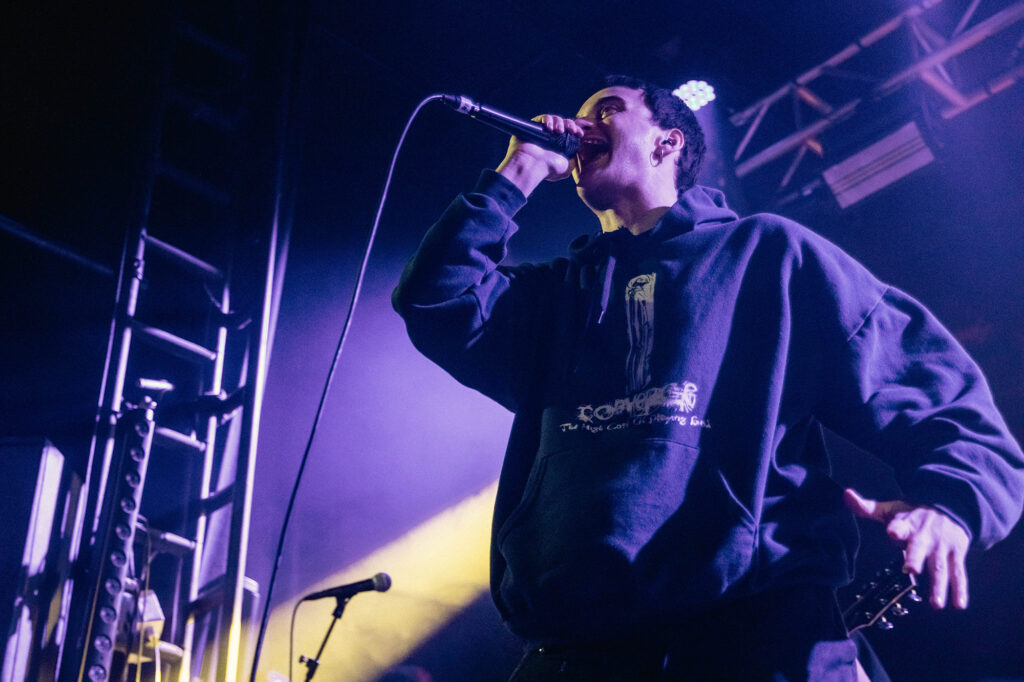 Killing Me Softly live @ The Electric Ballroom, London. Photo Credit: Sarah Tsang
Killing Me Softly live @ The Electric Ballroom, London. Photo Credit: Sarah TsangOpening the night with a disarming backtrack of eerie screams, Leeds-own KILLING ME SOFTLY launched into a full-frontal hardcore assault. The vocalist, channelling the spirit of Bryan Garris but with a deathcore-adjacent range, commanded the chaos. Their sound was a potent mix of ‘proper’ metalcore riffs punctuated by discordant breaks that used silence as a weapon, creating some prime two-step material. While this tactic was effective at commanding attention, the pauses inbetween songs felt disarming in a way that suggested the band was still refining their stagecraft for audiences beyond the size of a local show, despite presently performing in one of London’s iconic mid-sized venues. The guitarist, clad in a surprisingly casual white jumper and blue jeans, brought infectious energy with sporadic two-stepping and high kicks. Alongside an impeccably synced drummer, the pairing were a joy to listen to.
However, the band as a unit lacked a cohesive stage presence, struggling to convert the uninitiated beyond the occasional headbang. An unfortunate 13-minute technical issue forced a long, silent wait, but to their credit, the team recovered well, making up for lost time with a renewed intensity. Despite a disappointingly static crowd, their diverse set of influences could easily mark them as a promising opener for the likes of KNOCKED LOOSE and THORNHILL, with a little more work on stage presence. They ended their set in a flurry of instruments performing Knelt Before The Summer Sun, leaving a strong auditory impression that slightly outstripped their visual performance.
Rating: 7/10
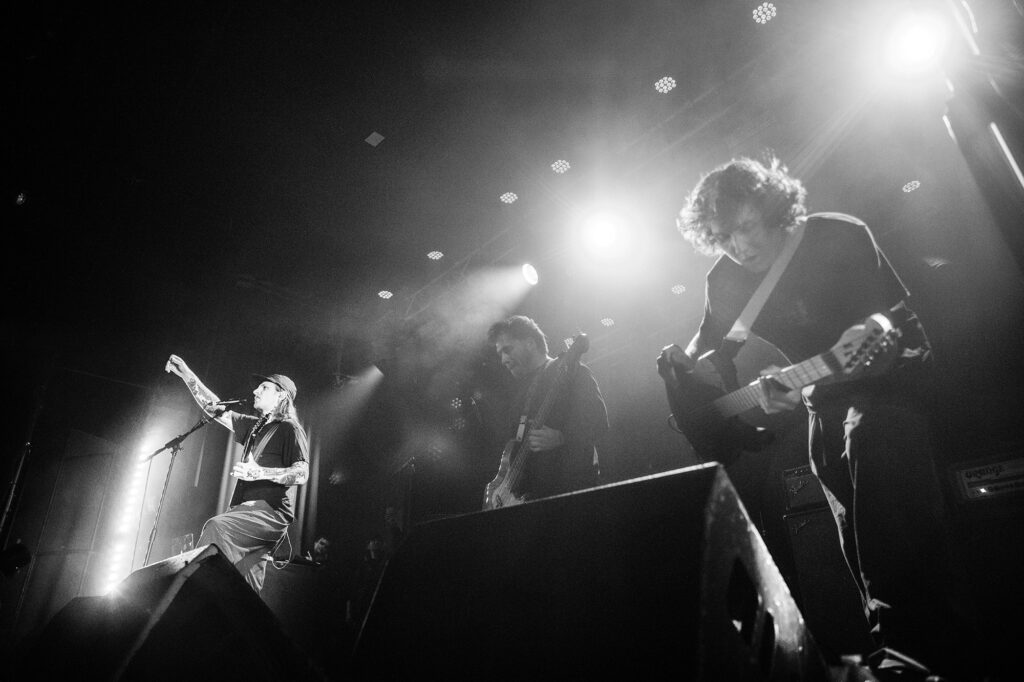 Bodyweb live @ The Electric Ballroom, London. Photo Credit: Sarah Tsang
Bodyweb live @ The Electric Ballroom, London. Photo Credit: Sarah TsangWhere the first act relied on discord, BODYWEB brought unadulterated, moshable, and danceable heaviness. From the first note, vocalist Louis Hardy’s great tone beckoned a call to the pit that, sadly, never fully materialised. The band functioned as a well-oiled machine, seamlessly integrating live mixes of industrial sounds run on a laptop by Nihiloxica, while their guitarist Tom Hobson borrowed the occasional nu-metal riff, all without straying from their hardcore roots. After opening with back-to-back with high-energy songs like no faith, incest and shadowboxing, they showcased their sonic range with synthetic, blending grungy shoegaze verses with a hardcore chorus, though the effect felt somewhat disjointed. A poignant highlight of the gig came with pull the plug’s rousing speech, dedicated to the victims of the ongoing Palestinian genocide, proving the future of hardcore still has strong roots in politics.
Drummer Luke Thompson proved himself a man with feet of speed, driving the relentless pace of BODYWEB’s catalogue seemingly without a double kick pedal. While songs like sugarcoated offered a slower, more introspective change of pace, they fell a little flat compared to their heavier counterparts. As kings of the breakdown, BODYWEB’s energy was undeniable, but they often relied too heavily on frontman Louis, with the rest of the band needing to engage more with the crowd. Closing with dead wire earned them the first crowd-surfer of the night, although an earlier, heavier track might have been a more powerful and impactful finale for a still largely static crowd.
Rating: 8/10
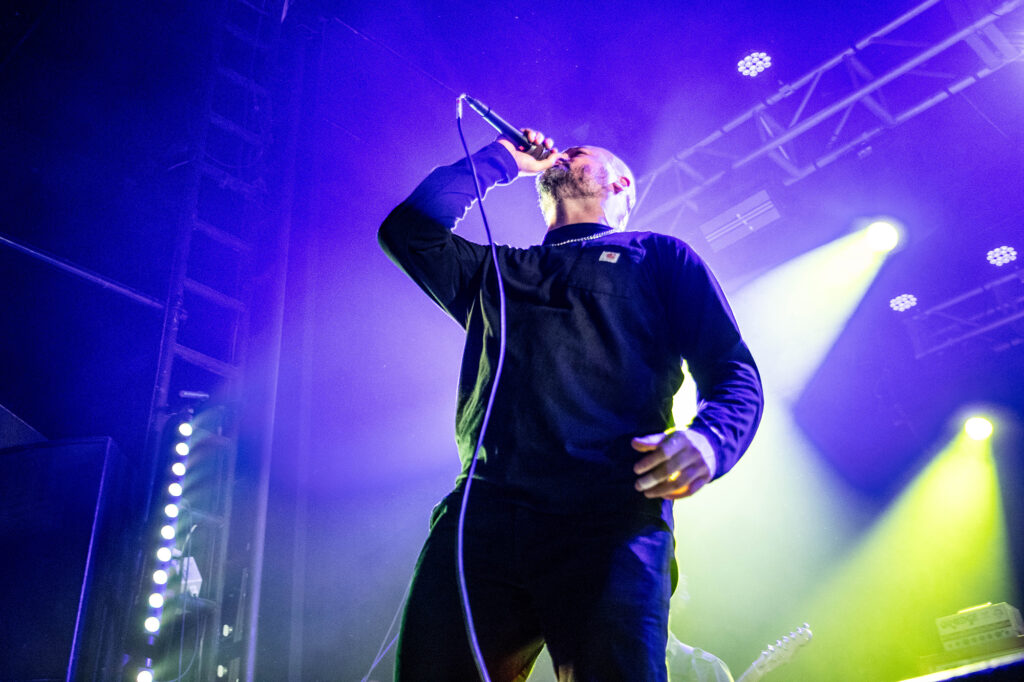 Poison The Well live @ The Electric Ballroom, London. Photo Credit: Sarah Tsang
Poison The Well live @ The Electric Ballroom, London. Photo Credit: Sarah TsangWhen POISON THE WELL took the stage, they immediately demonstrated why the headline slot was rightfully theirs. Their sound was mature, extremely polished, and required no fancy frills to impress – just a back-to-basics approach that was, literally, heavy on the bass. Guitarist Ryan Primack ripped across the stage with the vitality of someone half his age, still executing perfect jump kicks whilst riffing with perfection. This energy proved infectious, finally stirring the London crowd to life, who clearly were only interested in seeing these classic songs live. POISON THE WELL are complete professionals; when singer Jeffrey Moreira’s mic started to drop in volume 10 minutes into the set, it was played off without a hitch. Their sound remains a sexy, smooth blend of classic 90s guitar scrawls and undeniable hardcore weight, and this gathering felt like a true homecoming for an unmistakably older, cologne-scented crowd (though the youth were represented by a steady stream of surfers).
As the band delved into a back-to-back rendition of The Opposite of December, Moreira spoke warmly of the lifelong friendships forged by the record, cementing the night’s nostalgic atmosphere. A new song released last month, Trembling Level, carried the same ferocity as their classic material, but it was clear the audience was primarily there for the nostalgia. And while their performance was stellar, a slight monotony crept in over the relentless set; the pioneering sounds of 2000 began to blend with those of 2025. The highlight of their set was a welcome change of pace with Meeting Again for the First Time – the crowd softly sang the opening verse back to the band in a moment of palpable connection, proving that POISON THE WELL’s power isn’t just in their nimble speed, but in their soul.
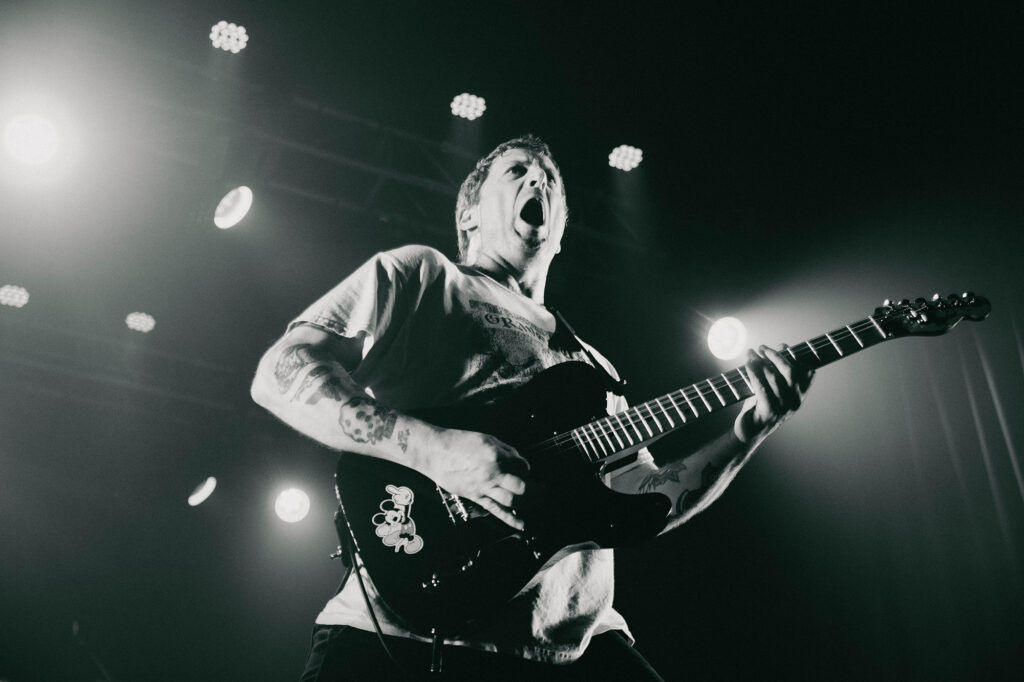 Poison The Well live @ The Electric Ballroom, London. Photo Credit: Sarah Tsang
Poison The Well live @ The Electric Ballroom, London. Photo Credit: Sarah TsangDespite the band’s talents, the crowd’s energy was often lacking. After alternative bands play The Electric Ballroom, the crowd usually leaves as a sweaty horde, but tonight was left curiously drip-free. Additionally, when the band asked who had seen them at Outbreak Festival or some of their other UK performances, the response was largely silent. For a band of their tenure and perseverance, it felt like a bigger, more engaged audience was deserved than the one POISON THE WELL received. Fortunately, the night ended on a high, with the final songs showcasing a welcome variation in temperament and a glimpse of the Moreira’s higher register, before closing melodically with Nerdy. Even if the London crowd took a while to truly meet them in the pit, POISON THE WELL delivered a masterclass and undoubtedly secured their legacy.
Rating: 8/10
Check out our photo gallery of the night’s action in London from Sarah Tsang here:
